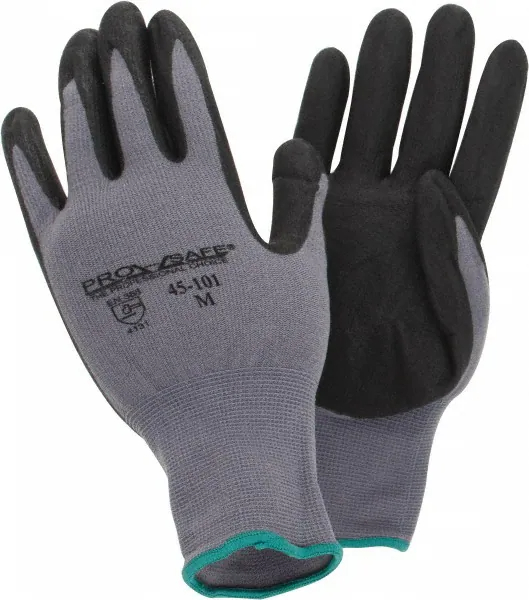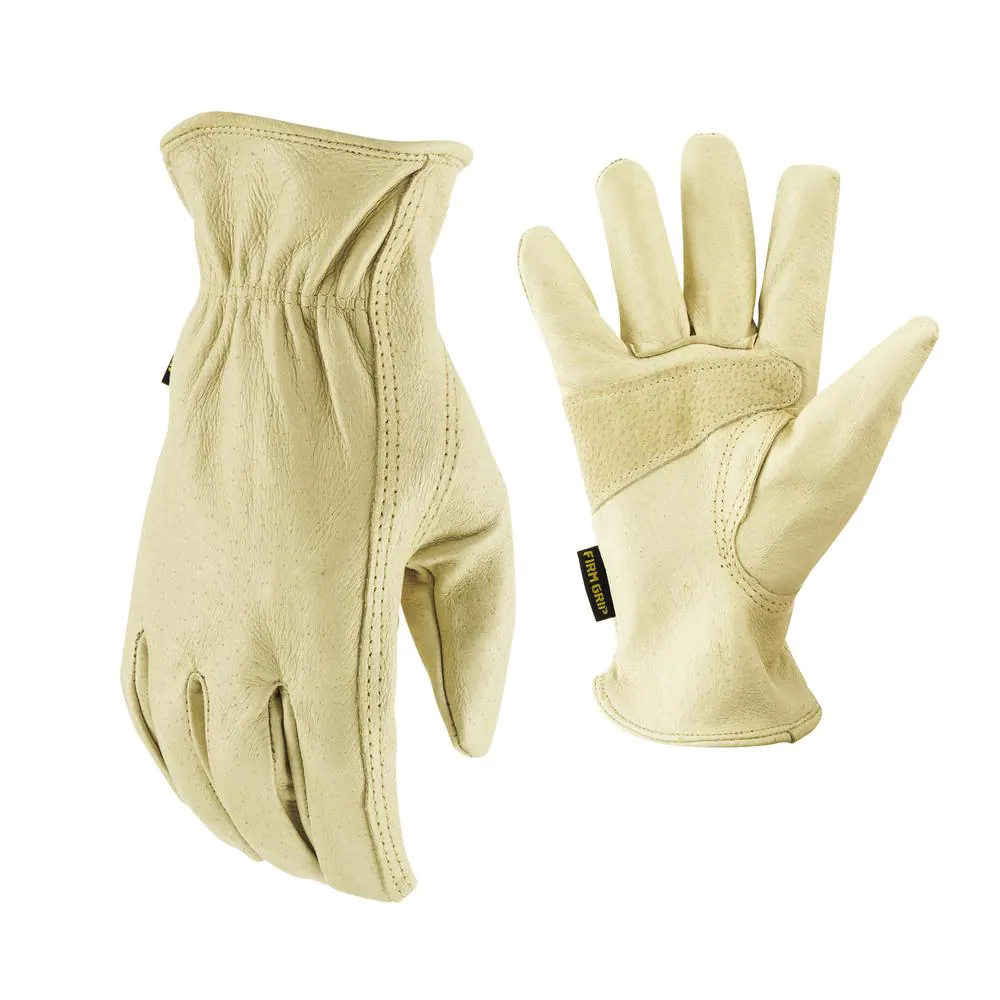In the realm of tough jobs and demanding tasks, few accessories are as essential as a reliable pair of work gloves. These protective garments serve as a barrier between hands and potential hazards, providing comfort, dexterity, and safety in a variety of work environments.
From construction sites to industrial facilities, agricultural fields to automotive workshops, work gloves are indispensable tools for workers across diverse industries. In this comprehensive exploration, we delve into the world of work gloves, examining their various types, materials, uses, and importance in ensuring both efficiency and safety on the job.
Understanding the Need for Protection:
The Importance of Work Gloves in Occupational Safety
In any work environment where hands are exposed to potential hazards such as sharp objects, chemicals, extreme temperatures, or abrasive surfaces, the need for protective gear is paramount. Work gloves serve as the first line of defense against these dangers, shielding hands from cuts, abrasions, burns, punctures, and other injuries. By providing a protective barrier, work gloves not only prevent immediate harm but also reduce the risk of long-term damage and occupational hazards, thereby promoting workplace safety and ensuring the well-being of workers.

Types of Work Gloves:
A Closer Look at Varieties and Specialized Applications
Work gloves come in a wide array of types, each designed to address specific hazards and tasks encountered in various industries. Some of the most common types of work gloves include:
Leather Gloves:
Renowned for their durability and versatility, leather gloves are widely used in construction, welding, landscaping, and general-purpose applications. Made from materials such as cowhide, goatskin, or pigskin, leather gloves offer excellent protection against abrasions, punctures, and rough surfaces, while also providing good grip and dexterity.
Mechanical Gloves:
Engineered for tasks that require mechanical protection and impact resistance, mechanical gloves feature reinforced palms, fingers, and knuckles. These gloves are commonly used in manufacturing, automotive repair, machinery operation, and construction, where workers face risks from heavy machinery, tools, and equipment.
Chemical-Resistant Gloves:
Designed to safeguard against exposure to hazardous chemicals, acids, solvents, and oils, chemical-resistant gloves are essential in industries such as pharmaceuticals, laboratories, cleaning services, and chemical manufacturing. These gloves are typically made from specialized materials such as neoprene, nitrile, PVC, or butyl rubber, which offer varying degrees of resistance to different chemicals.
Cut-Resistant Gloves:
Ideal for tasks involving sharp objects, blades, and materials such as glass, metal, or ceramics, cut-resistant gloves provide protection against lacerations and punctures. These gloves are commonly used in industries like construction, glass handling, metal fabrication, and food processing, where workers are exposed to sharp edges and machinery.
Heat-Resistant Gloves:
Engineered to withstand high temperatures and thermal hazards, heat-resistant gloves are essential for tasks involving welding, metalworking, foundry operations, and handling hot materials. Constructed from materials such as Kevlar, Nomex, or aluminized fabric, these gloves offer protection against burns, sparks, and molten metal splash.
Cold-Weather Gloves:
Designed to provide insulation and warmth in cold environments, cold-weather gloves are essential for outdoor workers in industries such as construction, agriculture, and logistics. These gloves are often insulated with materials such as Thinsulate or fleece and may feature waterproof or windproof coatings to keep hands dry and comfortable in harsh conditions.
Disposable Gloves:
Widely used in healthcare, food service, and laboratory settings, disposable gloves offer protection against contamination, pathogens, and biological hazards. Made from materials such as latex, nitrile, or vinyl, these gloves are convenient for single-use applications where hygiene and sanitation are paramount.
Choosing the Right Gloves: Factors to Consider for Optimal Performance and Safety
Selecting the appropriate work gloves is essential for ensuring optimal performance, comfort, and protection on the job. When choosing gloves for a particular task or work environment, several factors should be taken into consideration, including:
Hazards and Risks:
Identify the specific hazards and risks associated with the task or work environment, such as sharp objects, chemicals, heat, cold, or mechanical impact.
Glove Material:
Select gloves made from materials that provide adequate protection against the identified hazards, taking into account factors such as abrasion resistance, puncture resistance, chemical resistance, and thermal insulation.
Fit and Comfort:
Choose gloves that fit snugly and comfortably, allowing for sufficient dexterity and flexibility while ensuring a secure grip and range of motion.
Durability and Longevity:
Consider the durability and longevity of the gloves, especially for tasks that involve heavy use or prolonged wear. Look for gloves with reinforced seams, double stitching, and high-quality materials that withstand repeated use and abuse.
Environmental Conditions:
Take into account the environmental conditions of the work site, including temperature, humidity, and exposure to water or chemicals, and choose gloves that are suitable for the prevailing conditions.
Regulatory Compliance:
Ensure that the selected gloves comply with relevant safety standards and regulations, such as those set forth by organizations like the Occupational Safety and Health Administration (OSHA) or the European Union’s Personal Protective Equipment (PPE) Directive.
Caring for Your Gloves:
Maintenance and Proper Handling to Extend Lifespan and Performance
Proper maintenance and handling are essential for prolonging the lifespan and performance of work gloves, ensuring they remain effective and comfortable throughout their use. Here are some tips for caring for your gloves:
Regular Cleaning:
Clean gloves regularly to remove dirt, debris, and contaminants that can compromise their integrity and hygiene. Follow manufacturer recommendations for cleaning and maintenance, and avoid using harsh chemicals or solvents that may degrade the glove material.
Proper Storage:
Store gloves in a clean, dry place away from direct sunlight, heat sources, or moisture, which can cause degradation and deterioration over time. Consider using glove clips, hooks, or racks to keep gloves organized and easily accessible.
Inspect for Damage:
Routinely inspect gloves for signs of wear, tear, or damage, such as holes, cuts, or fraying seams. Replace damaged gloves promptly to maintain optimal protection and prevent injuries.
Avoid Contamination:
Take precautions to prevent contamination of gloves with hazardous substances or chemicals, and avoid using gloves for tasks they are not going to intend for. Dispose of disposable gloves after each use to prevent cross-contamination and ensure hygiene.
Proper Handling:
Handle gloves with care to avoid unnecessary stress or damage, and avoid exposing them to sharp objects, rough surfaces, or excessive heat or cold that may compromise their integrity.
Follow Manufacturer Guidelines:
Follow manufacturer guidelines and recommendations for proper use, care, and maintenance of specific glove types and materials, as they may vary depending on the manufacturer and product specifications.
By following these guidelines and practices, you can ensure that your work gloves remain effective, comfortable, and reliable throughout their lifespan, providing the protection and performance you need to tackle tough jobs with confidence.




